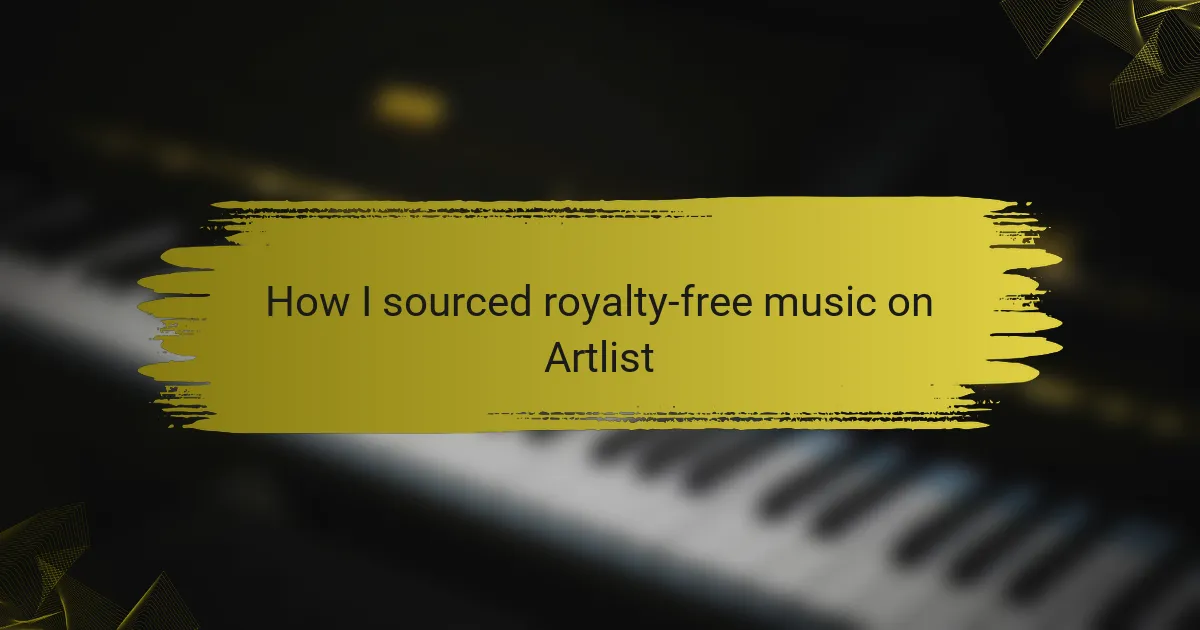Key takeaways
- Royalty-free music allows creators to access diverse, high-quality soundtracks without licensing fees, enabling artistic freedom.
- Music plays a crucial role in media by enhancing emotional connections, setting the tone, and increasing audience engagement.
- Artlist offers an intuitive platform with an extensive library and universal licensing, making it ideal for independent creators.
- Effective music selection considers project mood, track length, and genre variety to create an immersive listener experience.
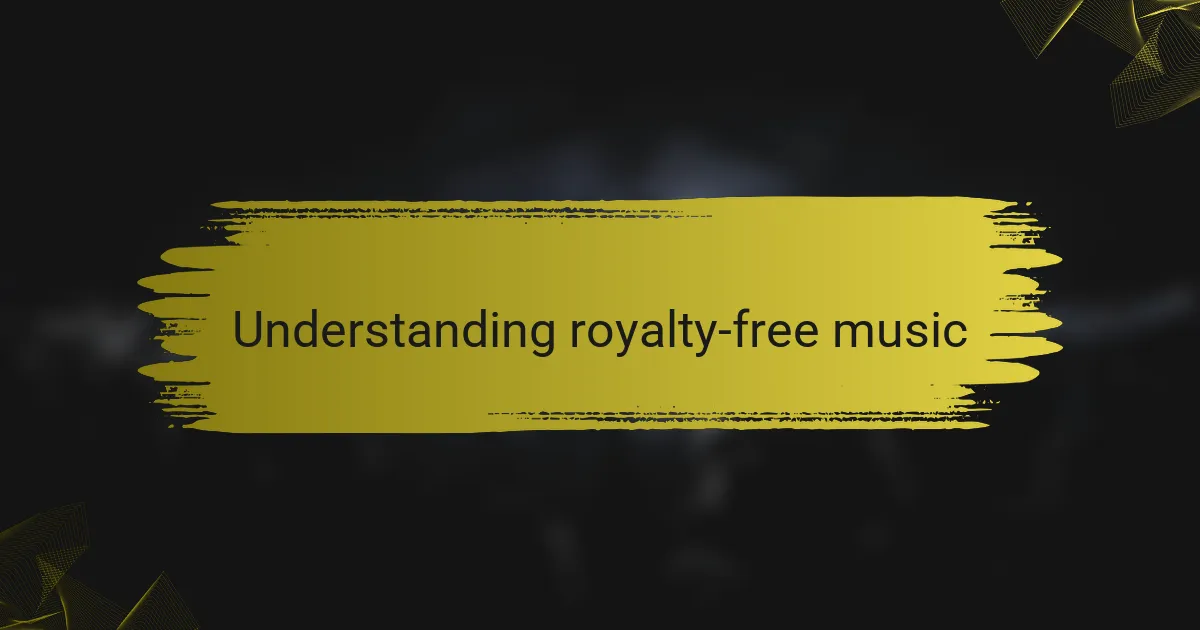
Understanding royalty-free music
Understanding royalty-free music is essential for creators like myself who seek quality soundtracks without the hassle of licensing fees. It allows us to elevate our projects while staying within budget, which is crucial for independent radio media. With platforms like Artlist, discovering the right tracks becomes more intuitive, making the process enjoyable rather than stressful.
When I first delved into sourcing music, I was overwhelmed by the choices. However, finding royalty-free options opened up a world of creativity without the financial burden. The freedom to use diverse music styles transformed my productions, allowing my artistic vision to flourish.
| Aspect | Royalty-Free Music |
|---|---|
| Licensing Fees | No upfront payment for music use |
| Usage Restrictions | Usually none, can use in various projects |
| Quality of Tracks | Often high-quality tracks available |
| Resale Rights | Generally not allowed to resell the music |
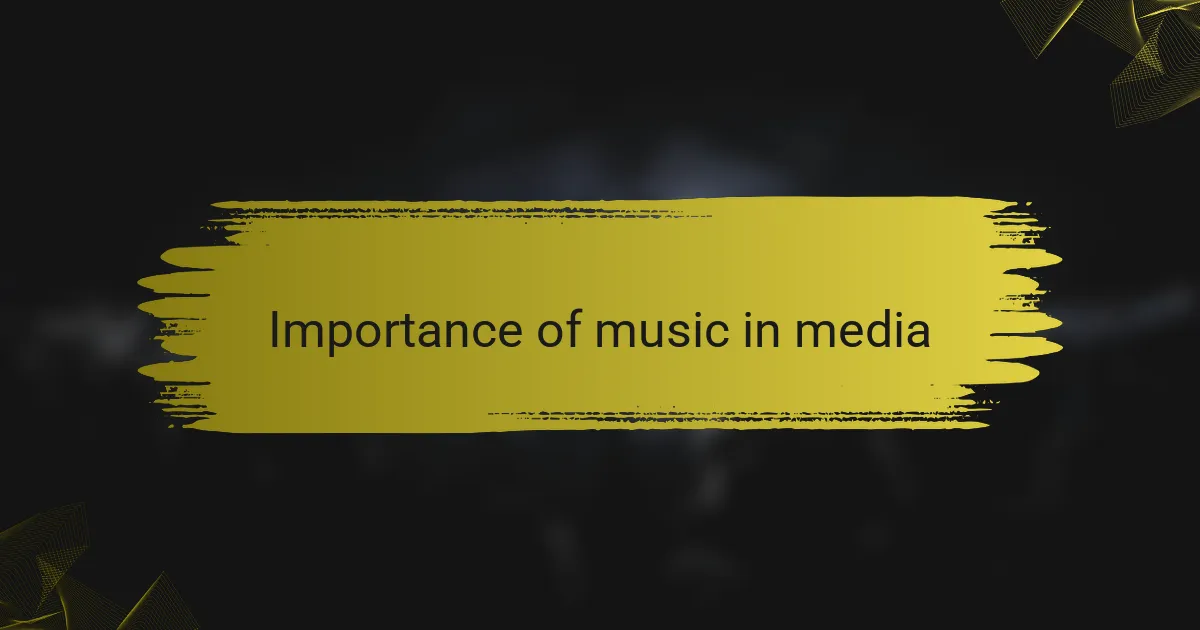
Importance of music in media
Music is more than just background noise; it is an emotional anchor that can elevate a media piece. For instance, I’ve often noticed how a well-chosen track can transform a story, making it more relatable and immersive for the audience. In my experience, playing the right music can evoke feelings that words alone sometimes can’t express, connecting listeners on a deeper level.
When sourcing royalty-free music, I prioritize tracks that resonate with the content’s theme. Here are some key reasons why music is crucial in media:
- Emotional Connection: Music can enhance feelings, drawing listeners into the story’s emotional core.
- Setting the Tone: The right soundtrack sets the mood and helps define the genre—whether it’s upbeat, dramatic, or serene.
- Memorability: A catchy tune can make a piece more memorable, leaving a lasting impression on the audience.
- Cohesion: Music ties together different elements of media, creating a seamless experience for the listener.
- Engagement: Dynamic soundtracks can keep the audience engaged, making them more likely to share and discuss the content.
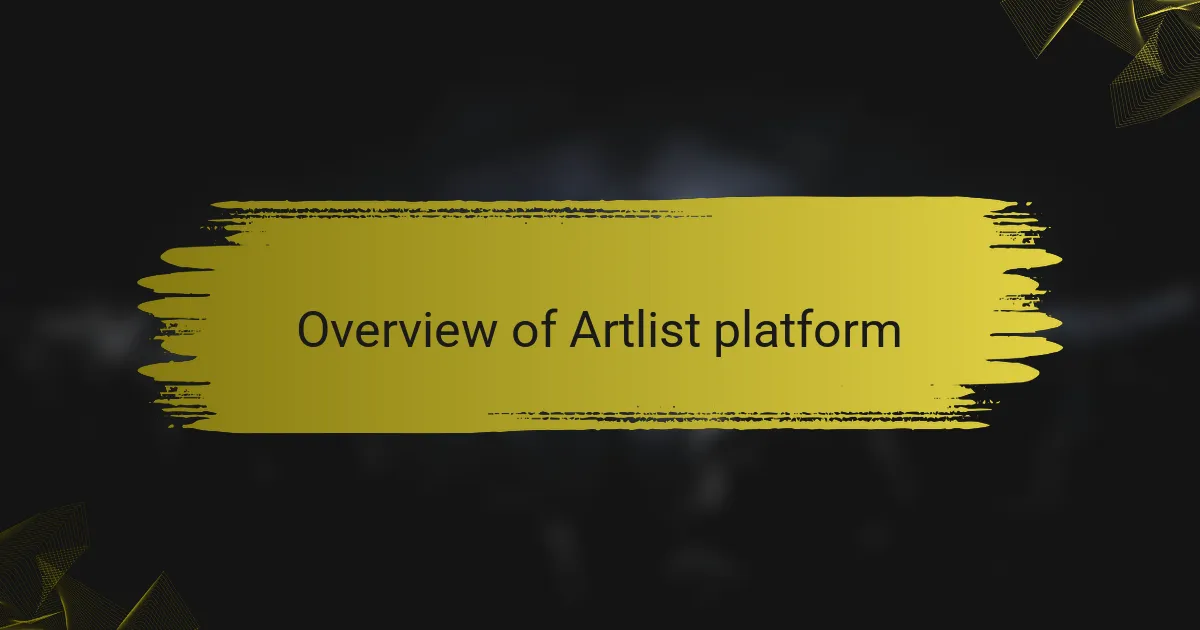
Overview of Artlist platform
Artlist is a remarkable platform I discovered while searching for royalty-free music, especially suited for independent creators. With an extensive library of high-quality tracks across various genres, it offers a user-friendly interface that makes navigation simple, even for those who may not be tech-savvy. I remember scrolling through the vast selection, feeling a wave of excitement as I found the perfect track that resonated with my vision.
One of the standout features of Artlist is its licensing flexibility. When I encountered projects that required different types of media, knowing that Artlist’s license covers everything from YouTube videos to podcasts gave me a sense of security. This ease of use is invaluable for creative individuals like myself who often juggle multiple projects.
| Feature | Artlist |
|---|---|
| Licensing | Universal license covering all media types |
| Music Library | Extensive collection across genres |
| User Experience | Intuitive and easy to navigate |
| Subscription Model | Annual subscription for unlimited downloads |
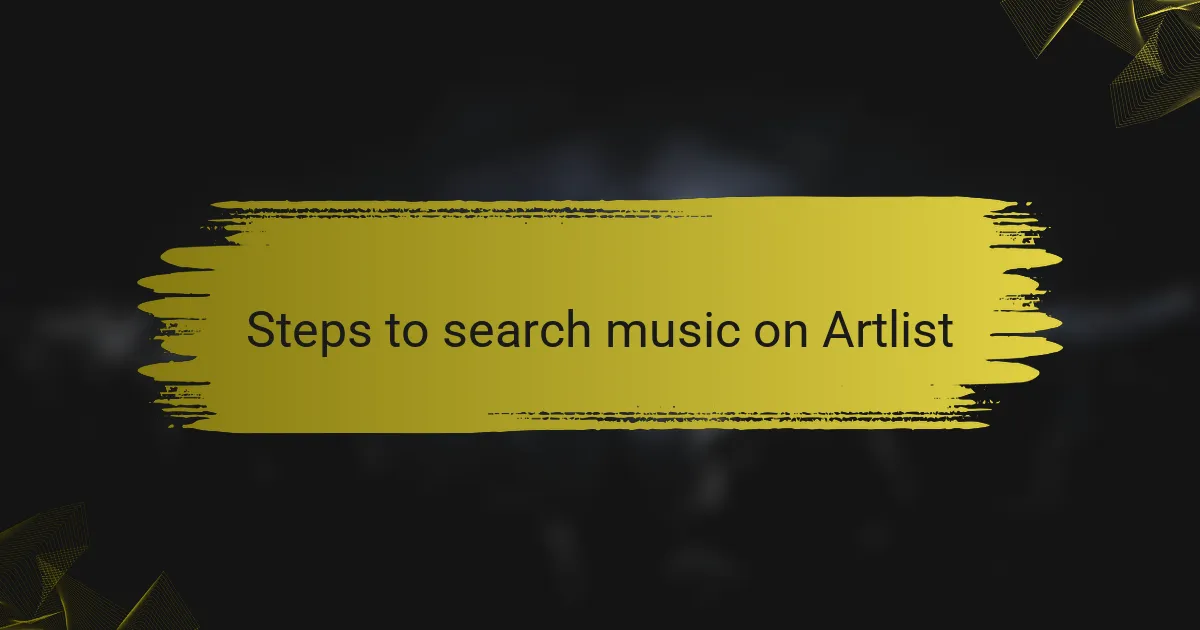
Steps to search music on Artlist
To search for music on Artlist, the first step is to access their homepage and familiarize yourself with the layout. I’ve always found the search bar to be my best friend here. You can type in keywords related to the mood or genre of music you’re looking for, and with a simple click, a plethora of options will unfold before your eyes.
Once you input your keywords, take advantage of the filtering features. For example, you can specify the genre, mood, or even the instruments used. When I first started searching, I was amazed at how quickly I could narrow down my options. It’s like having a personal music librarian at your fingertips, guiding you toward the perfect soundtrack for your project.
After filtering, listen to some tracks that catch your interest. I often find it helpful to create playlists of potential candidates. The joy of discovering a music piece that resonates with the essence of your project is exhilarating. By taking the time to explore and curate, I ensure that the final selection enhances my content beautifully.
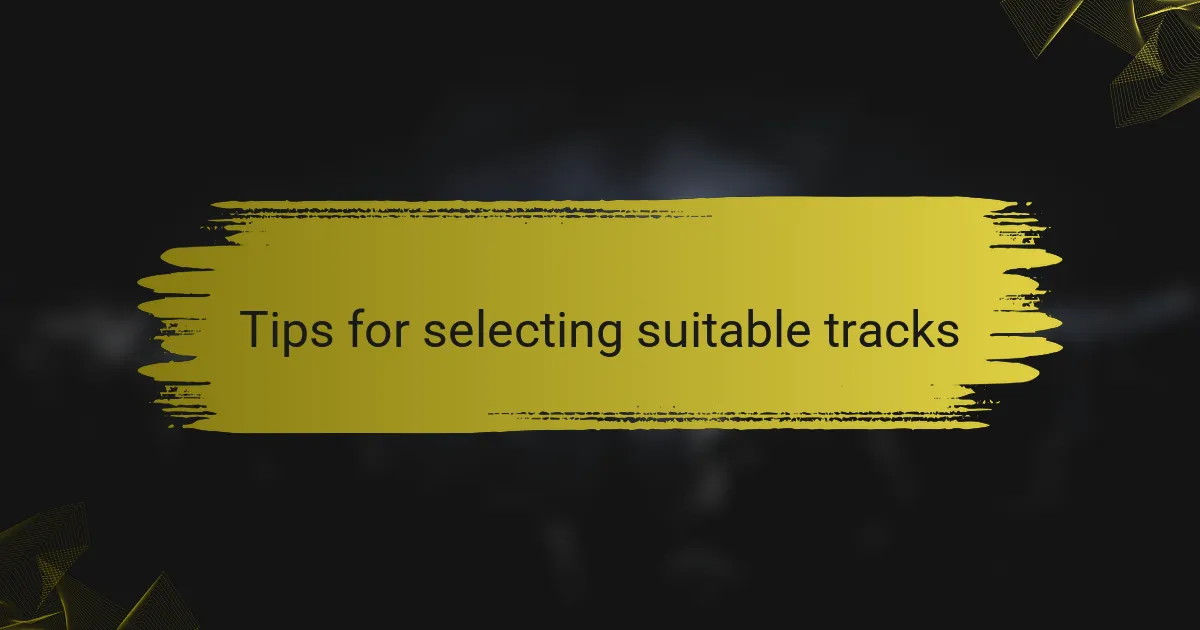
Tips for selecting suitable tracks
When selecting suitable tracks, I always emphasize the importance of matching the music to the project’s mood. Think about the emotions you want to convey. For instance, when I was working on a soft-spoken podcast episode, I gravitated toward gentle piano melodies because they foster a sense of calm. This connection helps create a more immersive experience for the listener. Can you remember a time when a piece of music enhanced a moment in a media project? I know I can.
Consider the length of the track as well. I’ve learned through experience that a well-timed piece can make a significant difference. If I have a tight segment, I’ll look for shorter tracks or ones that can loop smoothly without sounding repetitive. This strategy allows me to maintain the flow of the content while keeping it engaging. It’s all about finding the right fit without sacrificing quality or engagement.
Lastly, don’t hesitate to explore various genres. I often find unexpected gems in styles I wouldn’t typically consider for my projects. For example, while searching for upbeat music for a community event, I stumbled upon an indie rock track that perfectly captured the vibrant spirit of the occasion. This diverse approach not only broadens creative horizons but also enriches the overall product, making it more appealing to a wider audience. Have you ever stepped outside your comfort zone and found something that truly surprised you? It’s one of the joys of the creative journey.
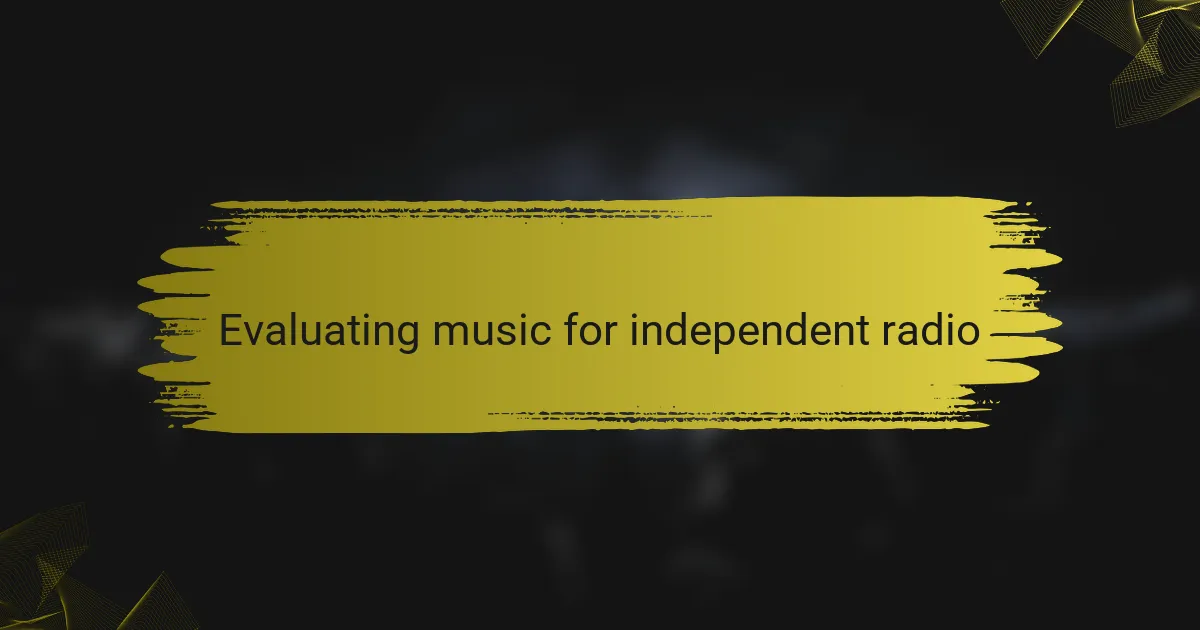
Evaluating music for independent radio
Evaluating music for independent radio involves much more than just finding a catchy tune. I often think about how the right track can encapsulate the essence of the story I’m trying to tell. For instance, during a live radio segment about local artisans, I selected a folk tune that resonated with the theme of craftsmanship and community. The music didn’t just fill silence; it enriched the narrative, inviting listeners into a world where creativity thrives.
When assessing tracks, listening closely to the emotional undertones is key. I’ve noticed that certain melodies keep the energy lively, while others evoke contemplation and nostalgia. I remember working on a segment about the environment and opting for serene nature sounds intertwined with gentle acoustic guitar. This choice fostered a connection with the audience that was palpable, reminding them of their own experiences in nature.
It’s also vital to consider how the music flows with your content. A well-paced soundtrack can enhance a storytelling moment. I’ve experienced times when the background music made listeners lean in closer, drawn in by the harmony of words and sound. It prompts me to ask—what kind of experience do you wish to create for your audience? Understanding this can guide your music evaluation process significantly.
